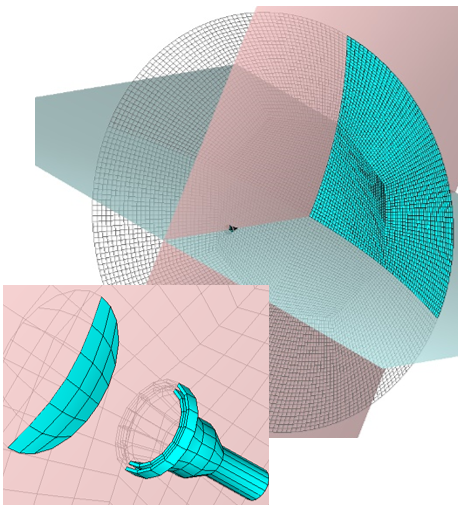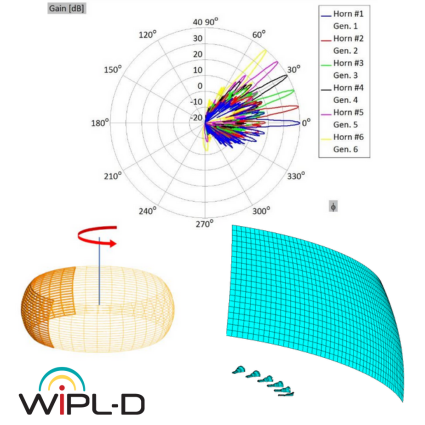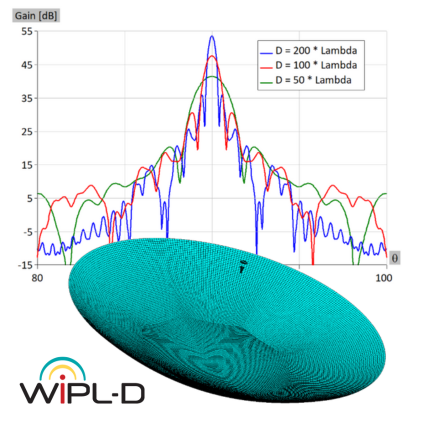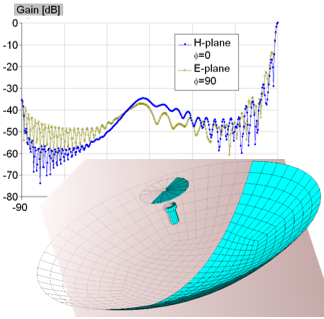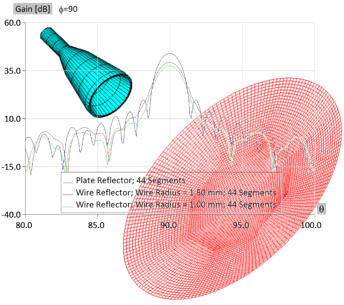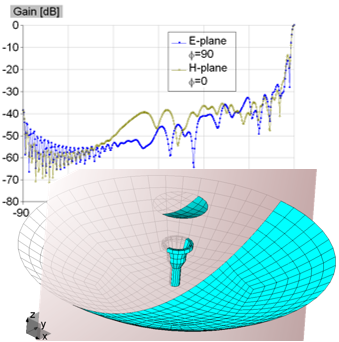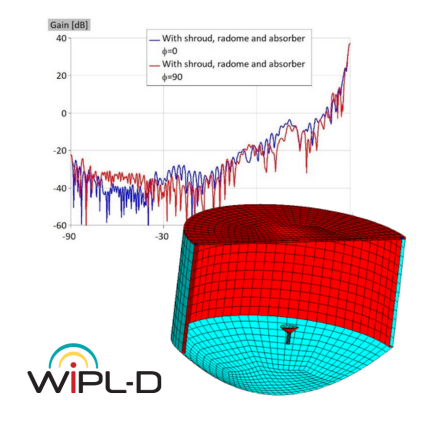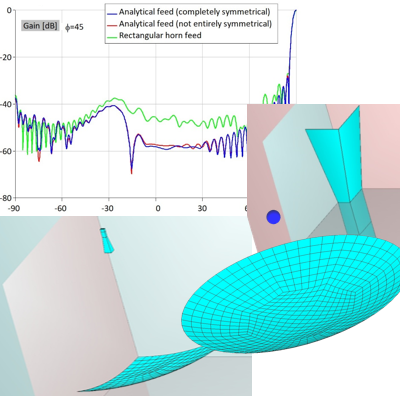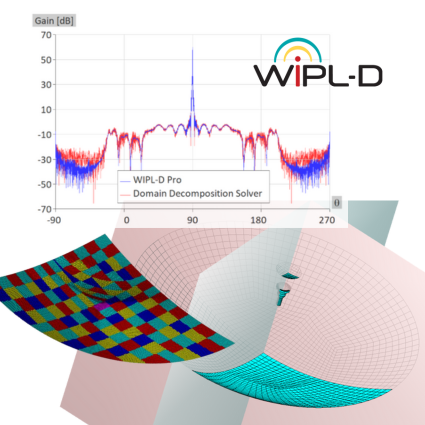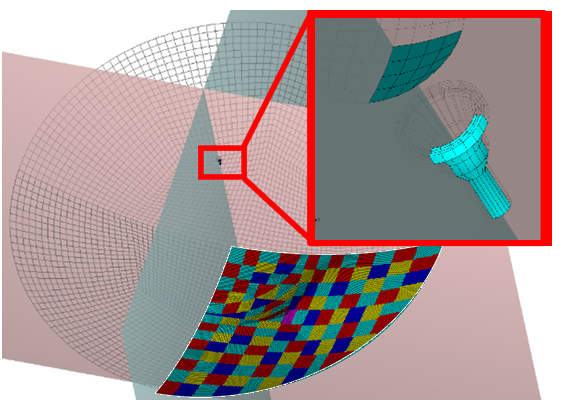Cassegrain Antenna - General Info
The application note provides essential information on this type of reflector antennas. WIPL-D MoM implementation is particularly well suited for reflector simulations, elaborated in detail (quadrilateral elements of 2λ × 2λ, up to the 8th expansion order, optimized for reflector performance). The approaches for building the model include specialized WIPL-D Pro geometrical objects, CAD file import, or user-defined script shapes, offering maximum flexibility. Simulation results for a 200λ Ka-band reflector demonstrate that very large reflector antennas can be efficiently simulated in WIPL-D software using a regular desktop PC, especially when equipped with low-end Nvidia GPU cards, ensuring fast, reliable analysis for complex structures.


